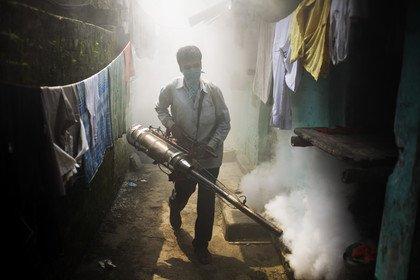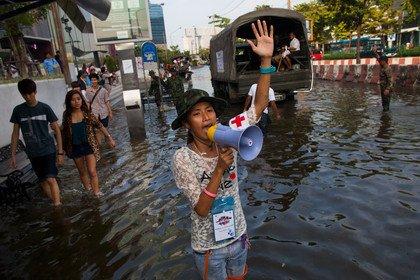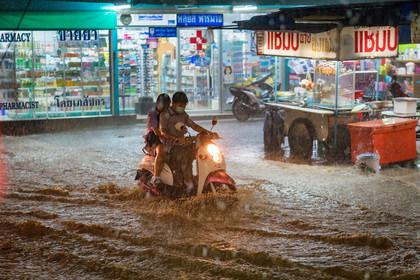
New digital tools to transform climate-sensitive infectious disease modelling
Climate change is having a profound effect on infectious diseases like dengue, malaria and cholera. Wellcome is funding digital tools to help address that.
Dengue is a threat to people’s health in Vietnam, and it’s being exacerbated by climate change. A new digital tool could protect more people by predicting where potential dengue outbreaks might happen.

Ania Blazejewska / Contributor
Saleswomen from Can Tho floating market on the Mekong Delta in the southern region of Vietnam.
Digital Content and Social Media Producer, Wellcome
Digital Content and Social Media Producer, Wellcome
In 2022, Vietnam went through one of its worst dengue outbreaks. According to the World Health Organization (WHO), there were more than 360,000 reported cases of dengue and 140 deaths in Vietnam [PDF]. By comparison, in 2021, Vietnam recorded 72,880 cases and 27 deaths [PDF].
Kien Quoc Do, a senior epidemiologist in the south of Vietnam working in dengue surveillance, intervention and response, remembers the outbreak vividly.
“Hospitals and medical centres at all administrative levels in Vietnam were crowded [with] the patients,” said Do, who works at the Pasteur Institute directed by Vietnam’s Ministry of Health and in charge of communicable disease surveillance and control.
“They even [had] to share beds due to a huge number of hospitalisations per day. Doctors [and] nurses were all exhausted.”
A new digital tool, E-DENGUE, is being developed by public health researcher Dr Dung Phung at the University of Queensland in Brisbane, Australia, with funding through our discretionary awards within our Digital Technologies Development Awards portfolio.
The tool will be used by Do and other local governmental health practitioners to predict outbreaks as early as two months in advance and try to prevent or mitigate them early.
Dengue is a viral infection spread through the bite of infected mosquitoes, primarily Aedes aegypti mosquitoes. It is found in regions with tropical or sub-tropical climates.
This vector-borne disease causes symptoms such as high fever, severe headache and muscle and joint pains. It has no specific treatment.
According to the WHO, half of the world’s population is at risk of dengue, with roughly 100 to 400 million cases annually.
Cases peak during the rainy season from June to November. From 2000 to 2020, Vietnam reported an average of 95,000 cases each year. Besides overwhelming the healthcare system and impacting people’s health, dengue in Vietnam also has an annual economic burden of millions of dollars.
The Mekong Delta region in the south of Vietnam – with its many rivers, canals and streams stemming from the Mekong River – is among the most affected annually. It had the highest record of dengue cases from 2000 to 2016.
Phung has seen first-hand Vietnam’s struggles dealing with dengue. He has worked as a medical doctor in Hanoi and as a health expert and researcher developing policy with Vietnam’s Ministry of Health.
One of the main challenges he’s identified is being one step behind the disease, reacting to an outbreak once it has already spread instead of being more proactive through prevention.
E-DENGUE is his solution to this challenge.
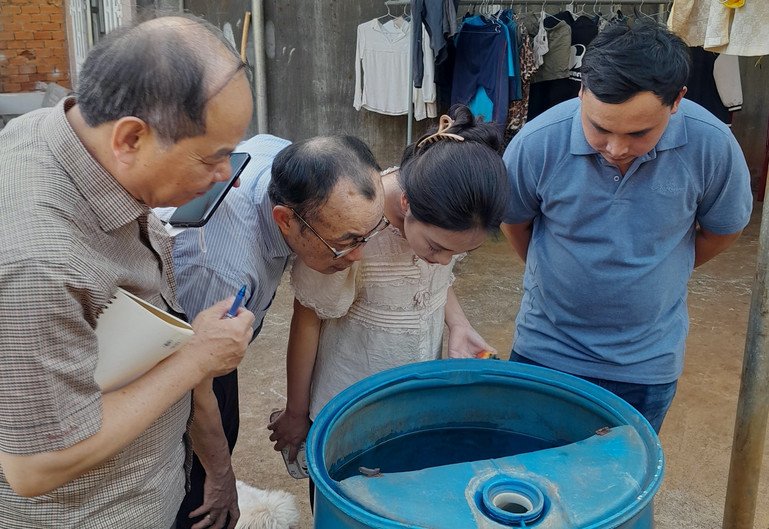
Kien Quoc Do, a senior epidemiologist in the south of Vietnam working for the Pasteur Institute directed by Vietnam’s Ministry of Health, shared these images from field trips related to dengue surveillance and control. Here, his colleagues inspect a barrel used for informal water storage.
Kien Quoc Do
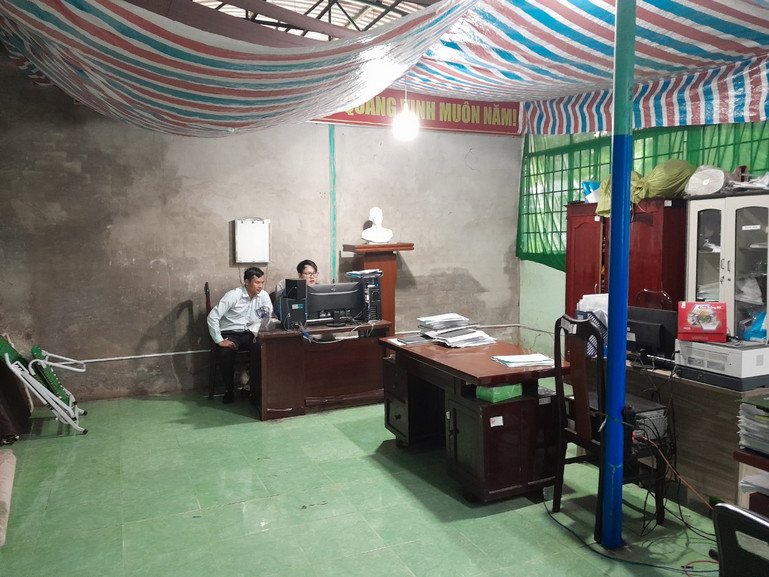
Kien Quoc Do, a senior epidemiologist in the south of Vietnam working for the Pasteur Institute directed by Vietnam’s Ministry of Health, shared these images from field trips related to dengue surveillance and control. Epidemiologists are seen here in a district office checking surveillance data and generating a report after fieldwork.
Kien Quoc Do
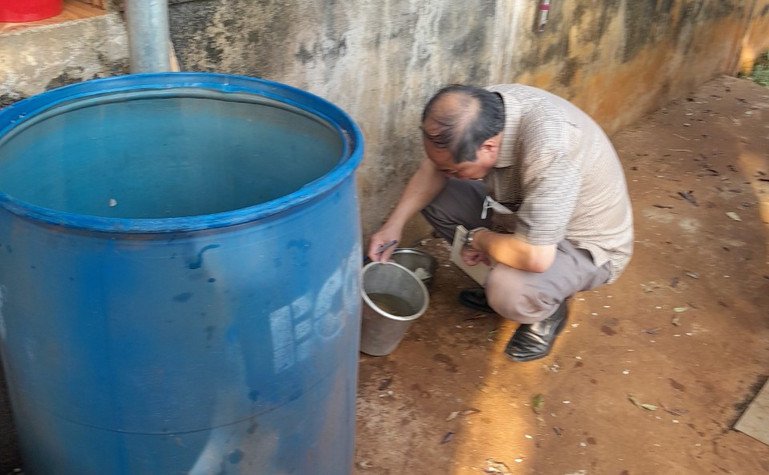
Kien Quoc Do, a senior epidemiologist in the south of Vietnam working for the Pasteur Institute directed by Vietnam’s Ministry of Health, shared these images from field trips related to dengue surveillance and control. Here, his colleague inspects a container of water.
Kien Quoc Do
E-DENGUE is a software dashboard for desktop computers that will use various data sources to predict the incidence of dengue ahead of time, without relying on case reporting. If successful, Phung’s team may look into creating a mobile app as well.
The tool, which will be developed with prediction models, will allow local health practitioners to accurately predict where an outbreak might occur as early as two months ahead of time. It could give them valuable time to mobilise resources and control the outbreak even before it has taken place, putting public health practitioners one step ahead of dengue.
“We expect E-DENGUE can help reduce about 25% of dengue incidence and outbreaks in comparison with the current reactive prevention practice,” Phung said. “E-DENGUE can help facilitate proactive prevention rather than reactive prevention.”
E-DENGUE will utilise data strongly associated with dengue transmission and the increased risk of dengue incidence in communities. This includes:
The tool will be tailored for the Mekong Delta region.
Phung has introduced the project to 13 provinces in the Delta, all of which have agreed to participate in the project.
“That means all provinces are aware of the strong benefit of the project to reduce the dengue incidence and the burden in the future,” he said.

Climate change is having a profound effect on infectious diseases like dengue, malaria and cholera. Wellcome is funding digital tools to help address that.
Advanced technology won’t mean anything if it’s not usable for the communities that need it most. Making sure the tool is cost-effective and easy to use is one of the top priorities – and challenges – for Phung and his team.
“If we cannot develop a cost-effective tool for the health department to afford and to use in the current routine practice, that tool will not be used,” said Phung.
He intends for E-DENGUE to be integrated into the existing surveillance system, using already available data such as the weather station near the Mekong Delta region. Integrating the tool into systems already in use will help make it usable for local health practitioners like Do.
“Many projects before [would] have a forecasting tool but [would] require very high experience and knowledge and skilled staff to run the model and to interpret the model,” said Do.
“But for E-DENGUE, I hope that it's suitable so that the district health staff can use the model and can understand the result in an easy way so they can decide when and where to conduct the intervention for dengue control.”
Do also finds promising the possibility E-DENGUE can spot more precise locations for intervention – for example, at the district or community level.
“You can concentrate your intervention so it will save your resources – human resources and financial resources,” he said.
“If we cannot develop a cost-effective tool for the health department to afford and to use in the current routine practice, that tool will not be used.”

Dr Dung Phung
Public Health Researcher and Senior Lecturer
University of Queensland, Australia
“Together with global mobility and urbanisation, climate change is a major driver of the increase of the number of dengue virus infections, which have doubled every decade since 1990,” said Phung.
Shifts in human behaviour because of extreme weather events brought on by climate change are a problem. For example, prolonged drought can lead to saltwater intrusion into mainland waters, which then causes a freshwater shortage. This leads to the informal storage of fresh water among communities like those in the Mekong Delta region.
“When they store water, it [creates] a very beautiful and very wonderful breeding site for mosquitoes,” said Do.
“The mosquito population will develop quickly in that situation so the dengue virus will be spread widely in communities, and we normally deal with a very big epidemic whenever there are climate change events like [intense] El Niño [or] the heavy rain in the dry season.”
We’re funding vital research into the impact climate change has on human health around the world, at national, regional and global levels. Explore our current funding call:
Advancing climate mitigation solutions with health co-benefits in low- and middle-income countries
If successful, E-DENGUE could have a valuable impact on the communities in the Mekong Delta region that currently have to live with the threat of dengue at all times.
Phung hopes that, in an increasingly warmer world with a higher burden of vector-borne disease, E-DENGUE's usefulness could also extend beyond just Vietnam.

Public Health Researcher and Senior Lecturer
University of Queensland, Australia
Dr Dung Phung is a Public Health Researcher and Senior Lecturer at the University of Queensland in Brisbane, Australia. He worked as a medical doctor in Hanoi, Vietnam and as a health expert and researcher developing policy with Vietnam’s Ministry of Health.
E-DENGUE, the software dashboard he is developing that could predict the incidence of dengue ahead of time, is being funded through our discretionary awards within our Digital Technologies Development Awards portfolio.
